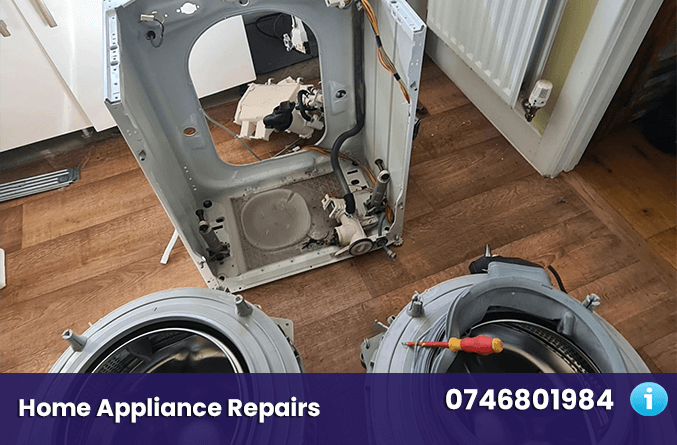Why Your Washing Machine Is Not Filling with Water
When you encounter a Washing Machine Not Filling with Water, it can be frustrating and inconvenient. Several reasons can cause this issue, and understanding them will help you find the right solution. Below, we explore the common reasons for this problem and how you can fix each one.
1. Clogged or Faulty Water Inlet Valve
The water inlet valve controls the flow of water into your washing machine. If it is clogged with debris or has become faulty, it may prevent the machine from filling with water.
Solution: Check the water inlet valve for any blockages. If you find debris, clean it out. If the valve is faulty, replacing it should solve the issue.
2. Kinked or Blocked Hoses
The hoses that connect your washing machine to the water supply can become kinked, blocked, or damaged. This can restrict the water flow, leading to a Washing Machine Not Filling with Water.
Solution: Inspect the hoses for any kinks or blockages. Straighten any kinks and clear out any obstructions. If the hoses are damaged, replace them.
3. Low Water Pressure
If your home’s water pressure is too low, it may not be sufficient to fill the washing machine. This is a common reason for a Washing Machine Not Filling with Water.
Solution: Test your water pressure by turning on other taps in your home. If the pressure is low, contact your water supplier or a plumber to resolve the issue.
4. Faulty Water Level Switch
The water level switch detects the water level in the machine and controls the water inlet valve. If this switch is faulty, it may not signal the valve to open, resulting in a Washing Machine Not Filling with Water.
Solution: Test the water level switch using a multimeter. If it is not functioning correctly, replace the switch.
5. Malfunctioning Control Board
The control board manages all the functions of the washing machine, including filling it with water. A malfunctioning control board may fail to send the signal to open the water inlet valve.
Solution: Inspect the control board for any signs of damage. If it is not working, consider replacing it.
6. Clogged Water Filter
Some washing machines have a water filter that traps debris before it enters the machine. If this filter becomes clogged, it can prevent water from filling the machine.
Solution: Locate and clean the water filter. If the filter is damaged, replace it to ensure smooth water flow.
7. Lid or Door Switch Problem
In top-loading washing machines, the lid switch must be engaged for the machine to fill with water. In front-loading machines, the door switch serves this function. If the switch is faulty, it may cause a Washing Machine Not Filling with Water.
Solution: Check the lid or door switch to ensure it is functioning properly. If it is not, replace the switch to allow the machine to fill with water.
8. Issue with the Timer
The timer controls the duration of each washing cycle. If the timer is faulty, it may not advance to the fill cycle, causing a Washing Machine Not Filling with Water.
Solution: Test the timer using a multimeter. If it is not working, replacing the timer should resolve the issue.
Understanding the possible reasons for a Washing Machine Not Filling with Water helps you address the issue efficiently. Whether it’s a blocked hose, a faulty valve, or a malfunctioning switch, each problem has a specific solution. By diagnosing and fixing these issues, you can ensure your washing machine works smoothly and reliably again
